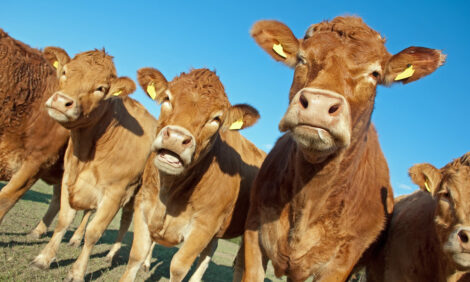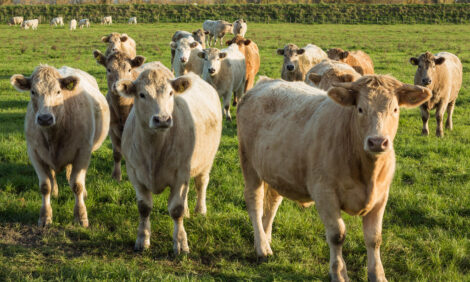



GPS-Equipped Cattle Part of Integrated Farm System in U of I Study
URBANA - Outfitting cars and farm equipment with global-positioning systems (GPS) is nothing new. But at a University of Illinois trust farm, even the cows come equipped with GPS.It's all part of an agro-eco system that rotates corn and cattle on the same land. U of I scientists are analyzing this integrated system to help growers squeeze as much productivity out of their land as possible. And tracking cattle movement with GPS plays one key part in the study.
"Producers look for every opportunity to be profitable," said Luis Rodriguez, an agricultural and biological engineer at the U of I. "If they have several products coming out of one system, the likelihood of their profit line being on the topside improves."
However, by introducing an extra layer of complexity--in this case, cattle--the system becomes more challenging to manage, said Rodriguez, one of several researchers involved in the project. "And it's important to consider all aspects of a system when you're managing it. As our systems become more complex, a decision about one aspect might not favor the productivity of another aspect within the system, or the overall system itself."
This integrated farming system has been established on the Dudley Smith Farm near Pana, Illinois, where researchers rotate grain crops with a herd of approximately 60 beef cattle on the same land. Grain crops are grown in the summer, while cattle graze adjacent pastures. When pastures become dormant in the fall, cattle are moved to croplands, where they spend late fall and winter grazing a mixture of annual cover crops and corn residues. In the spring, cattle are returned to the pastures.
Some of the issues that Rodriguez's research addresses include crop selection for adequate animal nutrition, manure management and soil compaction.
"This particular system is a calving operation, so the babies are the primary product, and nutrition of the animals is important," Rodriguez noted. Selection of the appropriate cover crop is an issue, he said, because "We need to make sure that the animals are gaining weight properly and not getting sick. Antibiotic inputs are expensive and not always savory to the customer down the line."
The animals strip graze, said Rodriguez, a practice that uses a movable electric fence to control the area the animals are allowed to feed on.
Evidently, "the grass is always greener..." is an adage that applies in the bovine world as well, Rodriguez noted. "The animals are always eager when the fence line is moved," he said. "In fact, they loiter right along the line, literally looking over the fence."
Rodriguez said their search for fresh forage may be an indicator of nutritional deficiencies that the producer may need to consider when selecting the cover crop.
"Right now, supplemental forage is needed," said Rodriguez, "and we'd like to minimize that, and possibly open up some opportunities for producers in the grass-fed beef markets."
Manure management is another consideration.
"Ideally, the animals should move randomly about the field, depositing manure as they go," he said. "That would put more organic content in the soil, making it a little healthier for the corn rotation in the spring."
But since the animals are loitering by the fence line, the manure is not being distributed evenly over the field, said Rodriguez. Researchers hope to introduce new control schemes to more effectively manage the movement of the animals. Some options include moveable shelters, windbreaks and watering/feed stations, "things to give the animals incentive to visit other areas in the field," said Rodriguez.
Because anecdotal evidence suggests that cattle tend to walk the same path to and from various locations, Rodriguez is also analyzing the possibility of soil compaction caused by the animals. "We're outfitting the cattle with GPS to better track their movement," Rodriguez said. "We anticipate being able to predict where compaction may occur on the field, since soil compaction can have an impact on subsequent corn yield."
Rodriguez emphasized the importance of system-wide analysis to the success of the system.
"We generally recognize that all aspects of a system are linked," he concluded, "but now we're learning to predict just how much these things are interrelated, so we can make better decisions for the overall system."
This project is funded by the Dudley Smith Initiative, which was established in 1996 to support innovative research and outreach that would embrace technological advancements and address the long-term stewardship and sustainability of agricultural practices.
TheCattleSite News Desk



